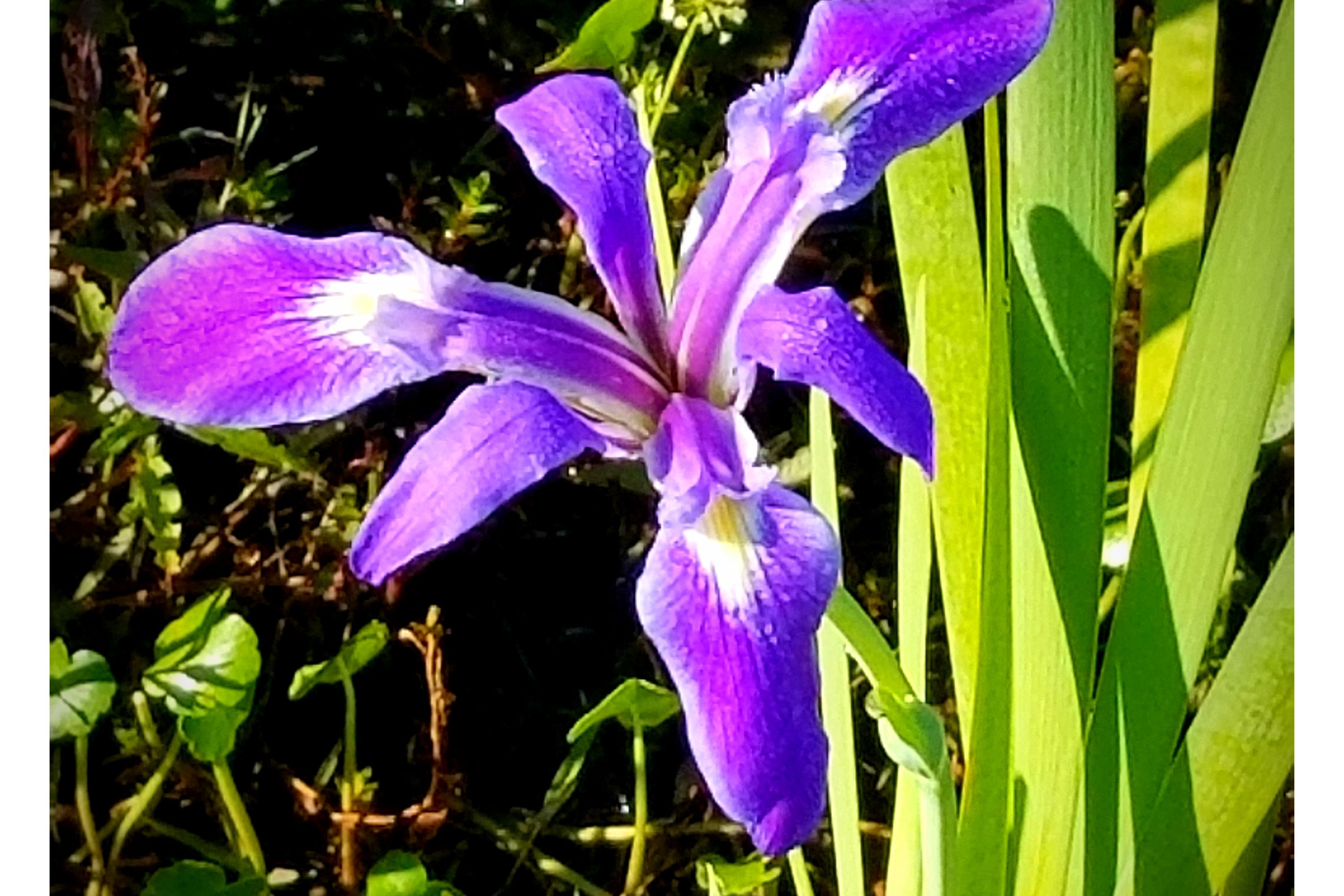Dixie iris
(Iris hexagona)

Description
Iris hexagona, commonly known as the Dixie iris, is a species in the genus Iris, it is also in the subgenus Limniris and in the series hexagonae. It is a rhizomatous perennial with long bright green leaves, long thin stem and has small groups of flowers in shades of blue, from violet, to bluish purple, to lavender. It flowers in springtime and is native to the southeastern and south-central US states. Iris hexagona has thick (around 2–2. cm in diameter), greenish, branching rhizomes, that can spread to form large colonies of plants. The rhizomes are shallow rooted and can spread up to 30 centimetres (12 inches) per plant. Arising from the rhizomes are the basal leaves, which are yellow-green to bright green and sword-shaped. They can grow up to between 30–100 cm long (12–39 in), (or 2 feet), and between 1.2–3 cm (0.47–1.18 in) wide. They overlap at the base, similar to a fan, but some leaves grow on the flowering stem. After the plant has flowered, the leaves wither and die, to re-grow in the autumn (for the next season). The flowering stem (or stalk) grows up to between 30–90 cm (0.98–2.95 ft)or 12–36 inches). The stem is usually straight but sometimes slightly zig-zag, or flexuous (winding), with 1 -2 branches. At the top of the stem are several groups of flowers in later spring, between late March to May (in the US), and between June and July (in the UK). Each flower arises from an axil (or spathe), of a reduced leaf (except the top flower) and the single (or double) flowers open in succession. They have a slight fragrance which is similar to sandalwood. The flowers come in a range of shades of blue, from violet, to bluish purple, to lavender. Although there are occasionally white or greenish-white forms. The flowers are generally between 4 to 4.75 inches (10.2 to 12.1 centimetres) across. They have yellow signal, crest, ridge or mid-rib, and a perianth tube of 2–3 cm, and 3 sepals (or falls) that are widely spreading (about 2 inches or 5 cm) and arching downward. The 3 standards are smaller and narrower than the sepals. It also has linear yellow anthers. After flowering, the plant produces a seed capsule in early summer. The six-angled seed pod, (which gives rise to its name 'hexagona'), has a ventricose (a swelling on one side). It is between 3–6 cm long (1.2–2.4 in) The large and heavy pods, contain large light brown seeds that are D-shaped and 4–6 mm (0.16–0.24 in) across.
Taxonomic tree:







